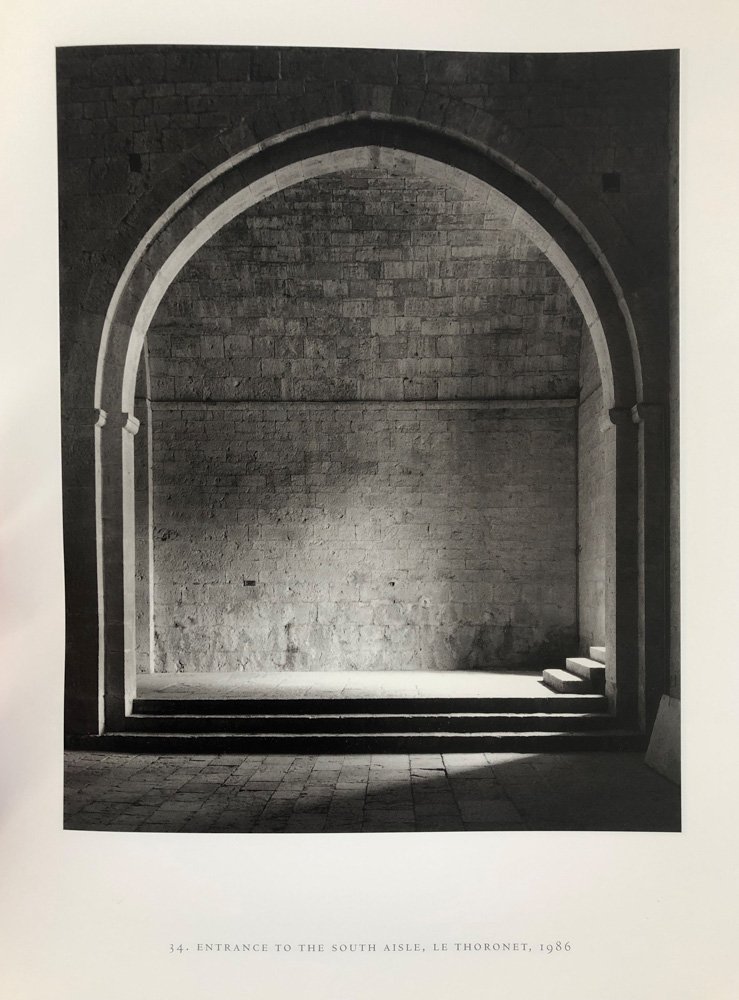Like so much that ends up as significant, this started out as serendipitous. I was wandering through a bookshop, noticed a book, flipped through it and then bought it. Back home, as I read through it I wasn’t much impressed. But it did contain a photograph I really liked and so I tracked that back and ended up with another book that I then realised was going to be important for me. It’s funny how this happens but sometimes I think all you need to do is follow your nose and world will supply the rest.
Anyway, taking things chronologically, here is the photo.
Entrance to the South Aisle, Le Thoronet, 1986 © David Heald
I think it is fabulous – right up my street. It seems to take light, structure and texture and to place them into a delicate balance which makes silence almost palpable.
The image comes from The Architecture of Silence by David Heald (Parabola Books, New York, 2000) - a collection of his photographs of Cistercian Abbeys in France taken over a decade or so from the mid-1980s to the mid-1990s with a very informative accompanying text by medieval architectural historian, Terryl L.Kinder. What attracts me about it is that, in the here-today, gone-tomorrow world of modern photography this book has a truly lasting quality. I can’t find Parabola Publishing on the internet but I am assuming that it is connected to Parabola Magazine the mythology/spiritual traditions quarterly.
You can find more images from the book at this page of his website.
David Heald is the Director of Photographic Services and Chief Photographer at the Guggenheim Museum in New York and you can find an interesting short clip of him here talking about his work over the last forty years – a large part of which has been photographing the Museum building itself. He sees that building as the most important work of art in the Guggenheim collection.
The unique quality of photography is that it is a direct representation of the world around us. It is therefore singularly well-placed to let the world speak for itself without interference. This is a truth generally obscured by much modern photography which seems to reflect only the restlessness of the age.
To have photographed the same building for forty years and still to find something new in it is a bit of a lesson for us all.




